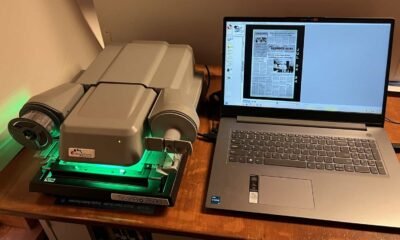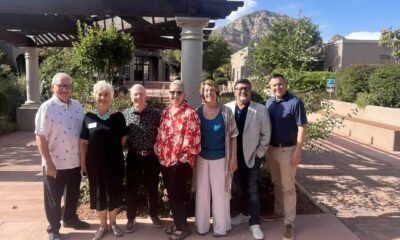ADOT
Revitalizing Sedona: Keeping Our Roadways Green

In Sedona, while the “Y” roundabout and the Tlaquepaque crosswalk often dominate discussions on traffic issues, the traffic lights in West Sedona also significantly impact congestion. A deeper understanding of these traffic patterns can aid locals in finding alternate routes and making quick decisions to minimize delays.
Doug Nintzel, a spokesman for the Arizona Department of Transportation, shed light on the management of Sedona’s traffic signals. The primary goal is to maintain a smooth flow along State Route 89A.
“The signals for SR 89A often remain green until a vehicle is detected attempting to turn or entering from a side street,” Nintzel explained. This detection initiates a timer when conflicting movements are processed. Once those movements are cleared, the signals revert to green for SR 89A traffic.
The technology employed involves video cameras mounted at intersections. These cameras detect incoming vehicles, triggering a “call” to change traffic signals. This system uses pre-set algorithms to determine when it is appropriate to transition from green to red. ADOT’s signal technicians program these timings, based on both federal standards and engineering expertise.
All intersections in Sedona feature protected left-turn signals. If no vehicles occupy a turning lane, the system will skip the protected turn phase. The variability in signal timings, however, reflects the local geography and traffic volumes of each intersection.
For example, intersections at Mountain Shadows Drive and Dry Creek Road allow for synchronized traffic flow, optimizing time for SR 89A. In contrast, more complex configurations at Coffee Pot Drive and Shelby Drive necessitate longer intervals between green lights for SR 89A, particularly when pedestrian signals are involved.
The activation times for each signal are calculated dynamically based on traffic density. While specific interval data was not disclosed by Nintzel, observations from Sedona Red Rock News revealed the following durations:
- Dry Creek Road and Arroyo Pinon Drive: Green light times for side streets averaged 11 seconds; SR 89A displayed durations around 35 seconds.
- Andante Drive: Average green light for side streets was 22 seconds; SR 89A green lasted about 95 seconds.
- Rodeo Drive and Shelby Drive: Southbound green light averaged 20 seconds; SR 89A experienced green durations of around 113 seconds.
- Coffee Pot Drive and Sunset Drive: Side streets averaged a green duration of 23 seconds, while SR 89A saw durations around 108 seconds.
- Mountain Shadows Drive and Northview Road: Side street green lights averaged 21 seconds; SR 89A routinely exceeded 85 seconds.
- Soldier Pass Road: Green times for side streets averaged 13 seconds; SR 89A durations typically reached 85 seconds.
- Airport Road: Green times remained between 10 to 12 seconds, while SR 89A exceeded 110 seconds.
- Forest Road: Green signals averaged 9 seconds for left turns onto SR 89A, which averaged around 126 seconds.
- Uptown midblock pedestrian signal: Remains green until a pedestrian request is made, pausing traffic for about 20 seconds.
These times do not account for additional delays caused by protected left turns or pedestrian crossings, which can extend red light durations by up to 25 seconds.
Ultimately, better driving awareness can reduce the time spent idle in Sedona’s traffic.


















